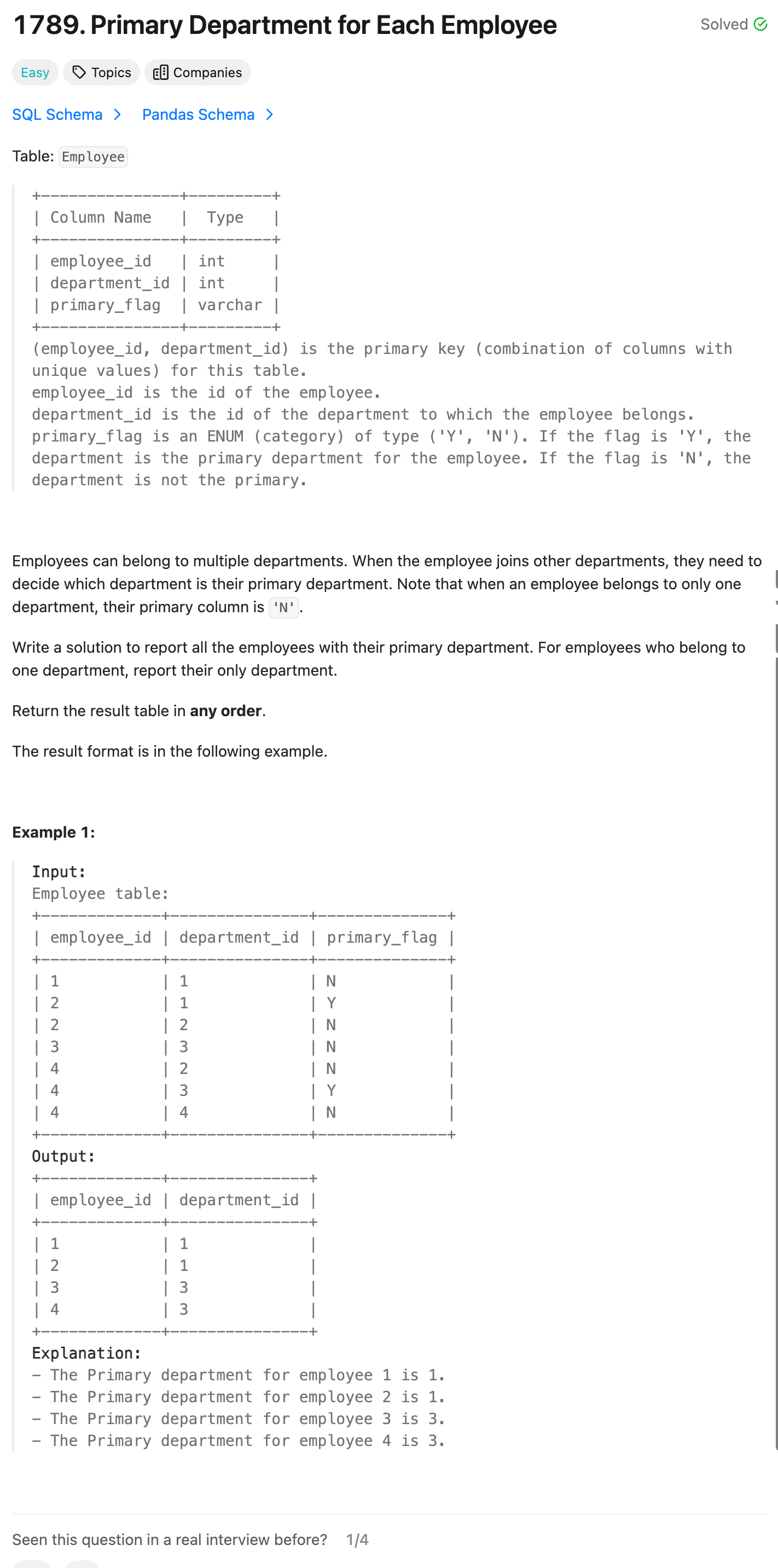SQL problem - Primary Department for Each Employee
Problem
Query
(
SELECT employee_id, department_id
FROM Employee
WHERE primary_flag = 'Y'
)
UNION
(
SELECT employee_id, department_id
FROM Employee
GROUP BY employee_id
HAVING COUNT(department_id) = 1
)
Editorial Solution
Approach 1: UNION
-- Retrieving employees with primary_flag set to 'Y'
SELECT
employee_id,
department_id
FROM
Employee
WHERE
primary_flag = 'Y'
UNION
-- Retrieving employees that appear exactly once in the Employee table
SELECT
employee_id,
department_id
FROM
Employee
GROUP BY
employee_id
HAVING
COUNT(employee_id) = 1;
Approach 2: Window Function (COUNT)
Step 1 - Inner Query with Window Function:
SELECT
*,
COUNT(employee_id) OVER(PARTITION BY employee_id) AS EmployeeCount
FROM
Employee
Result:
| employee_id | department_id | primary_flag | EmployeeCount |
|---|---|---|---|
| 1 | 1 | N | 1 |
| 2 | 1 | Y | 2 |
| 2 | 2 | N | 2 |
| 3 | 3 | N | 1 |
| 4 | 2 | N | 3 |
| 4 | 3 | Y | 3 |
| 4 | 4 | N | 3 |
Note:
COUNT(employee_id) OVER(PARTITION BY employee_id)is a window functionPARTITION BY employee_id: This breaks down the data into ‘windows’ or ‘partitions’ of rows that have the sameemployee_id. Each window is essentially a subset of the data for a specific employee.COUNT(employee_id) OVER(...): This counts the number of rows (i.e., the number of departments) for each employee within their respective partition/window. The result is a new column,EmployeeCount, which tells us how many departments each employee is associated with. This count is repeated for every row of the same employee.
Step 2 - Alias & Outer Query:
SELECT
employee_id,
department_id
FROM
EmployeePartition
Step 3 - Filtering with WHERE Clause:
WHERE
EmployeeCount = 1
OR primary_flag = 'Y'
Final implementation:
SELECT
employee_id,
department_id
FROM
(
SELECT
*,
COUNT(employee_id) OVER(PARTITION BY employee_id) AS EmployeeCount
FROM
Employee
) EmployeePartition
WHERE
EmployeeCount = 1
OR primary_flag = 'Y';
